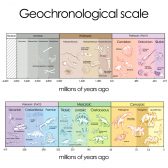Definition
noun
Genes that code for the same function or trait and their effects work together on the phenotype
Supplement
Genes may be classified as additive genes or non-additive genes. Additive genes are those genes that code for the same trait and their effects work together on the phenotype. An example of a function of additive genes is on the eye colour. Several genes work together to determine the colour of the eye of an offspring. Additive genes are associated with epistasis since they contribute to epistatic effects. In contrast, non-additive genes are genes in which there is no summation of the effects of the genes. In a non-additive gene pair, for instance, not all members of the gene pair will be expressed. The gene in a gene pair that is expressed is described as dominant. That means the dominant gene will not allow the expression of the other gene in the pair.
Additive genes affect the same trait. That is when the dominant forms of both genes are present together and produce double effect.1 Members of a gene pair may be equally expressed and therefore their expression is about the sum of individual effects of the genes in a pair.2
See also:
Reference(s):
1 Polymerism or Additive factor. Retrieved from http://theagricos.com/genetics/gene-interactions/polymerism-or-additive-factor/
2 Bates, R. O. and Cleveland, E.R. Basic Concepts of Genetic Improvement. Retrieved from http://www.nsif.com/Factsheets%5CNSIF-FS2-files/NSIF-FS2.html







